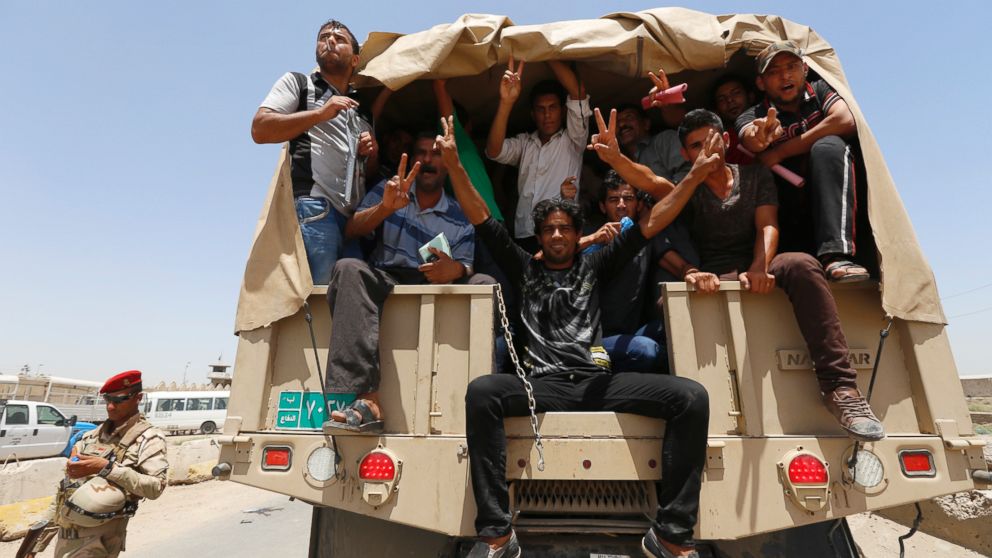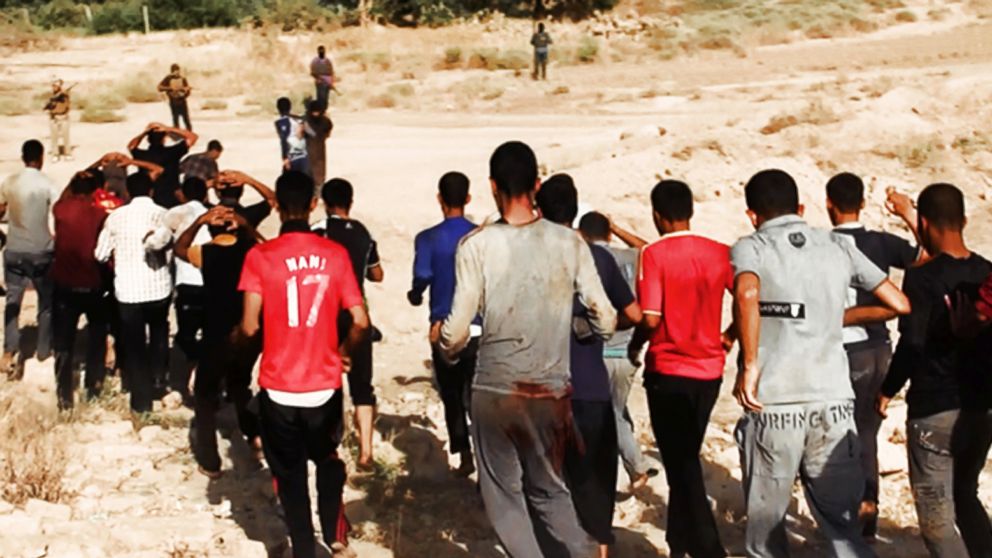WATCH: ISIS Militants Document Their March Towards Baghdad
 By COLLEEN CURRY
By COLLEEN CURRY
Iraq Is Beginning to Fight Back Against Militant Group ISIS
- After days of inaction, the Iraqi Ministry of Defense began fighting back against the militant group ISIS this weekend.
- Iraq conducted aerial strikes on targeted locations along the road that runs between Mosul and Baghdad in an attempt to stop ISIS from taking Baghdad. The military posted footage of the strikes on its Ministry of Defense website and said it had battled back ISIS forces along the road to Mosul.
- Iraqi news websites reported that the head of ISIS, Abu Bakir Baghdadi, was injured in an airstrike. Baghdadi is one of the U.S. Most Wanted Criminals, with a bounty of $10 million.
- Hundreds of men flocked to recruitment drives in Baghdad this weekend, encouraged by Iraq's top Shiite cleric and eager to join security forces to fight the Islamic militants who have captured large swaths of territory north of the capital.
Thaier Al-Sudani/Reuters

Volunteers, who have joined the Iraqi Army to fight against the predominantly Sunni militants who have taken over Mosul and other Northern provinces, travel in army trucks in Baghdad June 14, 2014.
Extremist Group Called ISIS Took Over Multiple Cities in Iraq
- Background: When the U.S. left Iraq, it was a country with a democratically elected government and a U.S.-trained Army. But after the U.S. chased out al Qaeda, remnants of the group reformed into a group called ISIS, and the democratically elected leader, a Shiite, treated minority Sunnis and Kurds very poorly. ISIS gained the support of the Sunnis.
- The group's initials stand for the Islamic State of Iraq and Syria; its goal is to create one unified Islamic state -- specifically, a Sunni one. (This is important; we'll come back to it).
- Last week, ISIS launched attacks on cities in Western Iraq including Mosul and Tikrit. They faced little or no resistance from the Iraqi Army that the U.S. helped arm and train. Many residents helped ISIS in the takeovers. They declared their intention to take over Baghdad.
- Today, images released on social media and purportedly distributed by ISIS show what they say are executions of Iraqi soldiers they have captured. The images are very graphic and show many Iraqi soldiers at the hands of ISIS.
The U.S. Says It Will Not Send Troops to Help Iraq
- President Barack Obama said, "We will not be sending U.S. troops back into combat in Iraq. Ultimately it's up to the Iraqis as a sovereign nation to solve their problems."
- Still, the U.S. has sent the USS George H. W. Bush and two other Navy ships to the Persian Gulf "should military options be required to protect American lives, citizens and interests in Iraq," the Pentagon said Saturday.
AFP/Getty Images
Iraqi civilians volunteering to fight a militant offensive gather themselves together among members of security forces on June 15, 2014, in the southern port city of Basra before going to Iraqi second city Mosul.
The Iraq Conflict and the Divisions Among Sunni, Shiite, and Kurds
- There are three main groups in Iraq: Sunni Arabs, Shiite Arabs and Sunni Kurds. Sunni and Shiite are different sects of Islam, a religion. Kurd is an ethnic group.
- In Iraq, Shiite Arabs are the majority, and they control the government. Then there are Sunni Kurds who live mostly by themselves in northern Iraq. And then there are Sunni Arabs who live in the western half of Iraq and are a political minority. Many Sunni Arabs are the ones joining and supporting the ISIS takeover.
- Many Sunni Muslims feel they were mistreated under the Shiite prime minister. Since Shiite Muslims are the majority, they tend to elect Shiite leaders, so Sunni leaders may never be in top positions of power. Because ISIS is Sunni, many Sunnis support them and see them as liberators.
- Not all residents are supporting ISIS. Many who fear ISIS and combat have been forced to flee Mosul and Tikrit as ISIS has taken over.
Want to know more? You can read all about the ISIS here, and all about the conflict in Iraq here.


